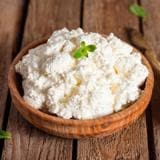Gluten-Free Diet: Thinking About Cutting Gluten From Your Diet? This Is What You Should Know

Wednesday, July 3, 2024, 00:05
Gluten is in fashion. Or rather, it is fashionable to leave it. According to a study by the Statista website, in 2013 the turnover of the market for products without this component was $3.239 million. In 2021, it almost doubled: $6.1 billion. And next year, their number is expected to reach 8,300. Are there more celiacs now than before?
In Spain, it is estimated that between 1 and 2% of the population, or between 450,000 and 900,000 people, suffer from this pathology. “It happens twice as often in women,” adds Julián Rodríguez Almagro, associate professor at the University of Castilla-La Mancha. In their case, they cannot eat anything containing gluten because they are intolerant to it.


The disease: “An immune system condition that damages the small intestine. “It’s an inflammatory disease that can affect different organs,” says the teacher. It’s becoming more and more well-diagnosed — and difficult to do — but that alone doesn’t justify the near-exponential growth of the gluten-free market, experts say. In the last few years, another growing group of people have chosen to go without the protein, and that has a lot to do with it.
Some people have what is known as a sensitivity to gluten, meaning it makes them uncomfortable but does not make them sick. Others simply avoid it because they hear and read things like “it makes you fat,” “it makes you bloated,” or “it gives you a stomach ache.” In total, seven out of ten people who skip this nutrient do so without medical advice, according to the report “Trends of Food Exclusion in the Spanish Population,” prepared by the MAPFRE Foundation and the Spanish Academy of Nutrition and Dietetics.
72
%
people who follow a gluten-free diet do so without receiving medical advice.
“This means that approximately 2,700,000 people in Spain exclude gluten from their diet without clinical necessity,” says Isascun Martín Cabrejas, professor and researcher in food technology and food safety at the Complutense University of Madrid. And he says this with concern, because the “mystification” of this poor substance is growing. We are turning it into a new enemy of health and we don’t even know what it is.
For starters, it’s a protein found in the seeds of many grains, not just wheat. Then it’s responsible for giving texture, elasticity, and sponginess to certain medications. And yes, it has nutritional value. “Getting rid of it can reduce your intake of fiber, vitamins D, B12, and folate, as well as iron, zinc, magnesium, and calcium,” explains family medicine expert Dr. Eva Arraz.
– So, celiac patients have nutritional deficiencies?
– A well-planned gluten-free diet does not necessarily have to be nutritionally deficient if it is based on unprocessed foods such as fruits, vegetables, legumes, dairy products, meat and fish, etc., taking into account the patient’s tastes and health status.
Martin Cabrejas answers, and warns of something else: if food is gluten-free, it is not healthier. That is, cookies without this element are not better than those with it. Quite the opposite. “Abuse of gluten-free products can change the level of cholesterol or triglycerides in the blood, excessively gain weight and increase the risk of cardiovascular diseases, as well as metabolic syndrome.”
This contradicts the belief that a gluten-free diet helps you lose weight. “They may even contain more bad fats and simple sugars and less fiber than their versions,” the researcher explains. The explanation is that making cookies, bread, cookies… without gluten is not so easy. Try baking bread at home and you will see that the result is not what you expect.
More sugar, more fat
This protein helps to cook certain foods, and when we remove it, the recipe is not convincing: continuing with the bread example, you get a very crumbly mazacotte. What is done then? The simplest thing is to add other ingredients “to compensate for the loss of texture”. For example, sugars, sweeteners, fats… And the result is usually “sweeter and more delicious” products. So it is also important to read the nutritional value on the label before putting it in the basket, unless you have celiac disease.
“If you don’t have a gluten-related disorder, eating gluten-free products won’t affect your health,” concludes Martín Cabrejas. On the other hand, your wallet will suffer. According to calculations by the Federation of Celiac Associations of Spain (FACE), following a gluten-free diet costs 1,087.72 more per year.
If we gave the same menu to a person who does not have celiac disease and another person who does, the latter would spend €22.66 more in the shopping basket per week due to the substitution of products for gluten. “All specific food products are more expensive, although the biggest difference is observed in Christmas products, wafer biscuits and cereal bars,” FACE reports.
When can we put “gluten free” on a label?
Eating gluten-free and not having celiac disease is a trend, but the labeling of products as such is strictly regulated, as it is a health issue for those who suffer from this pathology. It is regulated by a European standard, which states that this name can only be given “if the food does not contain more than 20 mg / kg of gluten”. And, in addition to being stated in the text, the packaging of these products has a spike with a hash mark, which is the official certification. Another curious thing is when a product is reported as gluten-free, although it naturally does not contain it, for example, fruit juice.
Access for a whole month for only €0.99.
Are you already a subscriber? Login
